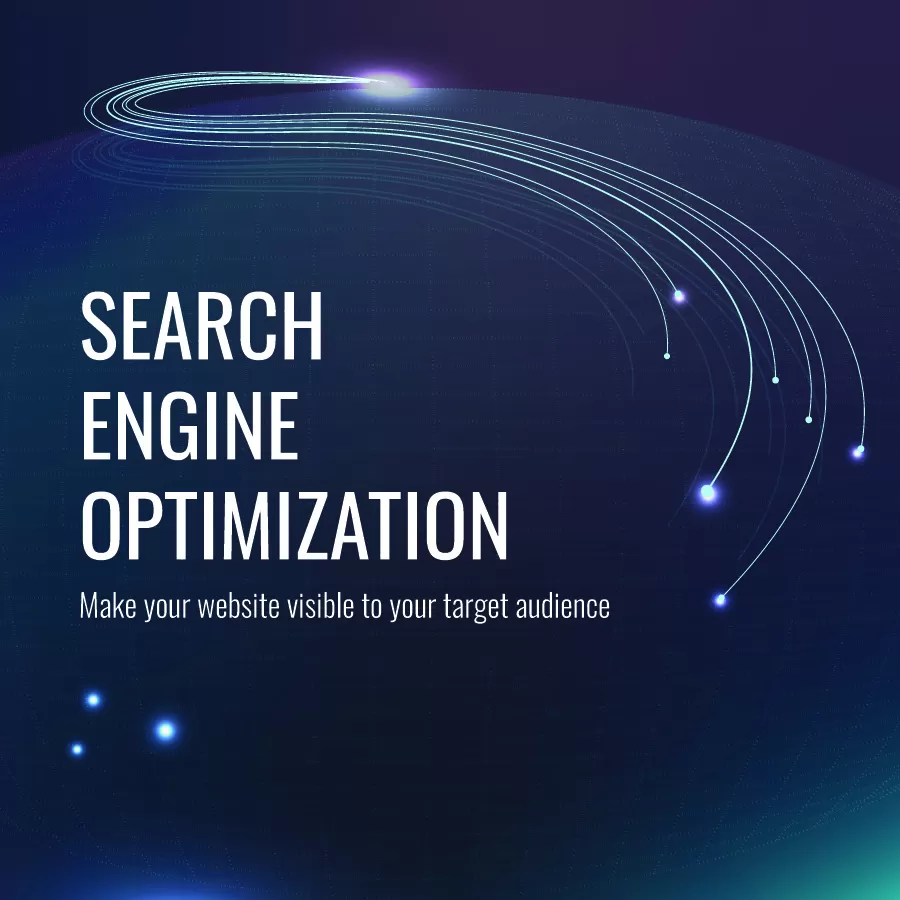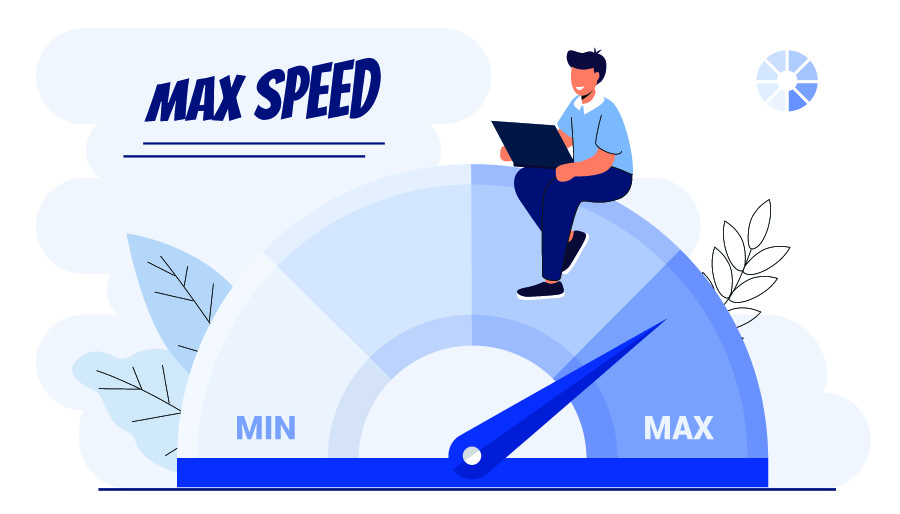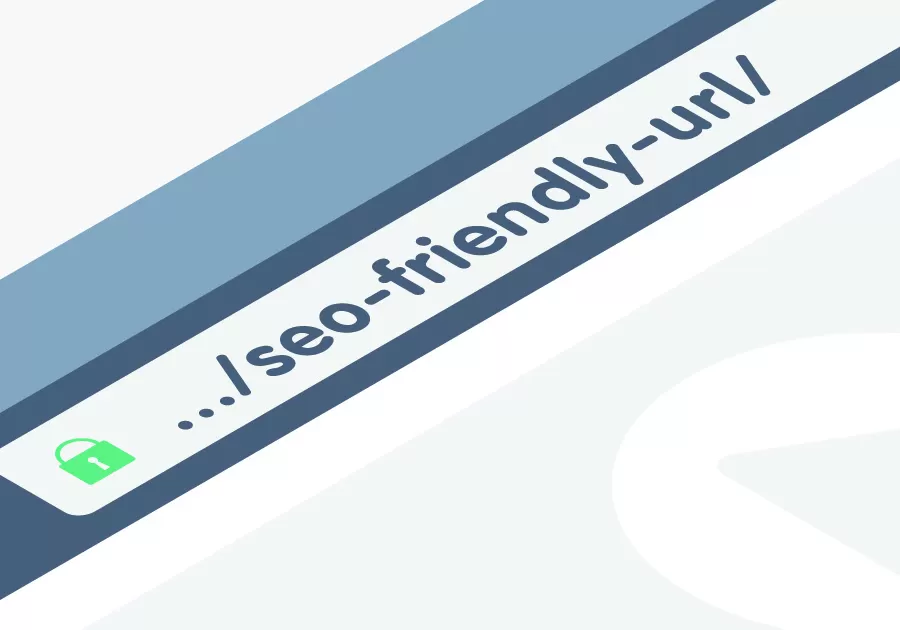On-Page SEO: Your Ultimate Guide to Optimizing Your Website in 2023
In today’s digital age, having a website isn’t enough to stay ahead of the competition. You need to make sure that your website appears on the first page of search engine results for your targeted keywords. This is where SEO (Search Engine Optimization) comes into the picture. On-page SEO involves optimizing your web pages to improve your search engine ranking. This includes optimizing your page URLs, meta descriptions, tags, and internal links. Keyword research is an essential aspect of SEO, as it helps you understand what your target audience is searching for. In this complete guide to on-page SEO, we will explore the importance of on-site optimization, keyword research, and tag optimization, and provide tips on how to optimize your web pages for better search engine rankings.
Conduct a Website Audit
Before making any changes, it’s important to understand the current state of your website. A website audit can help you identify technical issues, content gaps, and other areas for improvement.
Before implementing any SEO strategy, it is important to conduct a website audit to identify areas of improvement. A website audit involves checking each web page individually to ensure that they are optimized following the best practices of on-site and off-page SEO. One step is checking the page titles, URLs, and alt text to ensure that they use relevant keywords and match the search intent of users. A website audit also involves looking at ranking factors, such as page load speed and mobile compatibility, to help Google index the website better. It is important to have a checklist to ensure that all pages are checked, and the results are recorded. A website audit can also help identify issues that may be holding a website back from ranking higher in the SERPs.
On-page Search Engine Optimization
Basics On-page optimization, also known as on-site SEO, is the practice of improving the individual web pages of a website to rank higher in search engine results pages (SERP). The objective is to make your content effectively answer a user’s query based on specific keywords. This technique involves optimizing the HTML source code of a web page to make it more relevant and user-friendly. One of the leading practices in on-page optimization is the use of keywords. However, cramming too many keywords in the content or images is called keyword stuffing and is considered poor digital etiquette. While this helps Google understand what your website is about, it’s essential to optimize the keyword density. Thus, optimizing titles, descriptions, headers, images, and content to match the user’s search query on desktop or mobile devices is an important approach to on-page SEO. For advanced on-page SEO, you can refer to a complete guide to on-page optimization or hire an SEO practice to boost your rankings.
On-Page Search Engine Optimization Elements
On-Page SEO elements play a crucial role in digital marketing today. SEO includes various techniques and strategies to optimize a website for search engines, and on-page SEO is an essential part of it. Some of the important on-page elements include using keywords in title tags, meta descriptions, URLs, header tags, and content. Technical SEO involves optimizing website speed and structure, while content marketing focuses on creating high-quality SEO content that tells Google what the website is about. Conducting an SEO audit and using SEO tools like a keyword research tool can help to identify on-page SEO issues and improve website performance. A well-structured on-page SEO checklist can also help ensure that every important element is covered. In short, optimizing on-page SEO is crucial for achieving higher search engine rankings, getting more traffic to a website, and achieving overall digital marketing success.
Optimize Meta Tag Description for SEO
Optimizing the meta tag description is an important on-page SEO factor that can significantly improve your website’s visibility on Google and other search engines. The meta description is a brief summary of your webpage’s content that appears under the URL in the search engine results page. This means that your meta tag description should include relevant keywords that accurately describe the page’s content. It is part of on-page SEO, which includes optimizing various on-page factors to improve your website’s ranking in search engine results. A good meta tag description not only makes it easier for Google to understand your web page’s content, but it also entices users to click on your link. Google may use your meta description as a snippet in the search results, so it is important to make it as compelling and informative as possible. Overall, optimizing your meta tag description is an important aspect of on-page SEO that can have a significant impact on your website’s overall SEO performance.
Meta tags, including the title tag and meta description, are important for both user experience and SEO. Make sure your meta tags accurately describe the content of each page and include relevant keywords.
Guideline to Improve Website Speed
Improving your website speed is very important for on-page SEO. On-page SEO includes all of the optimization techniques that can be done on your website page. Google knows that website speed is important for SEO, and it is considered one of the on-page SEO basics. On-page SEO best practices include optimizing your images, combining and minifying CSS and JavaScript files, and optimizing your website’s caching. Important for on-page SEO is using a good SEO title that includes target keywords, making sure that your website is mobile-friendly and responsive, and optimizing your website’s content for readability and keyword density. On-page SEO can determine whether your website will rank well in search engines or not, so it is important to invest time and effort into improving your on-page SEO.
Website speed is a crucial factor for both user experience and SEO. To improve website speed, you can compress images, minify code, and use a content delivery network (CDN) to deliver content more quickly.
Use descriptive and Accessible URLs
The use of descriptive and accessible URLs is an important aspect of on-page SEO. It plays a crucial role in determining the success of SEO efforts, as it helps search engines understand the content of a page. When URLs are descriptive, they give users an idea of what to expect from the page before even clicking on it. In addition, they make it easier for search engines to crawl and index the content, which can lead to higher ranking positions in search engine results. To write SEO content that is at the top of the search results, it’s important to take your on-page SEO to the next level by incorporating descriptive and accessible URLs. On-page SEO refers to the various factors that affect how a page is ranked in search results, and having descriptive URLs is one of the most important. Knowing about SEO can make a big difference in how successful your website is in being found by users online.
URLs that are descriptive and include relevant keywords can help both users and search engines understand the content of a page. Make sure your URLs are easy to read and include relevant keywords.
Create High-quality Content
Creating high-quality content is crucial for SEO success. On-page SEO is important for optimizing your content for search engines, so make sure to include relevant keywords and meta descriptions. Additionally, important SEO factors include creating unique, engaging content that provides value to your audience. SEO management involves ensuring that your website is optimized for search engines and that your content is providing value to your audience. During a content SEO optimization project, it’s important to not forget about image optimization, as well as conversion rate optimization to ensure that your content is leading to conversions. Overall, investing time and effort into creating high-quality content is vital for long-term SEO success.
Content is king when it comes to SEO. Create high-quality content that is relevant to your target audience and includes relevant keywords. Make sure your content is well-written and provides value to your readers.
Optimize your Content
Optimizing your content is crucial for the success of your SEO management project. On-page SEO is important for improving the visibility of your website, which can have a significant impact on your conversion rate optimization. Content SEO is an integral part of on-page SEO, and it involves creating high-quality, relevant content that is optimized for specific keywords. Image optimization is also important, as it can help improve the speed of your website and the overall user experience. Optimizing your content can also help improve your website’s search engine ranking, which can lead to increased traffic and more business opportunities. By focusing on important SEO strategies such as content optimization, you can boost your online presence and attract more potential customers.
Use header tags
Header tags are an important component of on-page SEO. They are used to structure the content of web pages and signal to search engines the hierarchy and importance of the content. Header tags range from H1 to H6, with H1 being the most important and H6 being the least important. H1 tags are typically used for the main title of a page or post, while the rest of the header tags are used for subheadings and other hierarchical information. Proper use of header tags can improve the user experience by making content more organized and easier to read, while also improving search engine rankings by signaling the relevance of the page content to search engines. It is important to use header tags appropriately, avoid keyword stuffing and maintain a logical and structured hierarchy of information on the page.
Header tags (H1, H2, H3, etc.) can help break up content and make it easier to read. Use header tags to organize your content and include relevant keywords.
Use Target Keyword
On-page SEO is important for all websites looking to rank higher in search engine results pages (SERPs). One key element of on-page SEO is using the target keyword throughout the content. Target keywords are the main phrases or words that someone might search for to find your website. By incorporating these keywords into the content, it helps search engines understand what the page is about, making it more likely to rank higher for those terms. However, it’s important to use keywords strategically and not stuff them into content unnaturally. This means including them in the title tag, heading tags, meta descriptions, and body copy in a way that flows naturally to the reader. By focusing on using the right target keywords effectively, you can improve on-page SEO and help more users find and engage with your website.
Optimize Images
Optimizing images is an important aspect of on-page SEO that should not be overlooked by website owners. Images can enhance the visual appeal of a website and make it more engaging to visitors. However, large images can slow down the loading time of a web page, negatively impacting its performance in search engine rankings. Therefore, optimizing images by compressing them to reduce their file size without sacrificing quality, using relevant alt tags and titles, and choosing the right file format can improve the speed and smoothness of the website, resulting in a better user experience. This not only increases the chances of visitors staying on the website longer but also signals to search engines that the website is well-organized and optimized, ultimately leading to better search engine rankings. In short, optimizing images is an essential task in maintaining a successful website from an SEO perspective.
In addition to compressing images, you can optimize them for SEO by including relevant alt tags and filenames. This can help search engines understand the content of the image and improve your website’s visibility in image search results.
Use internal linking
Internal linking is an essential part of SEO strategy, and it is vital for everyone to understand why it is crucial to incorporate it into their website. Internal linking refers to the links that connect different pages on your website, and they help in boosting your search engine rankings. It is a powerful way to communicate with search engines and direct them to the essential pages on your site. Not only that, but it also helps users navigate your site and improves their experience. Additionally, internal linking helps to reduce the bounce rate of your site by keeping users engaged and interested in what they are reading. Therefore, it is essential to ensure that all of your website’s pages are connected through internal links. By doing this, you will not only boost your website’s rankings but also increase user engagement, reduce bounce rate, and improve the overall user experience.
Internal linking can help users navigate your website and improve the flow of link equity. Link to other relevant pages on your website using descriptive anchor text.
FREE TELEPHONE CONSULTATION
Implement schema markup
Implementing schema markup is a crucial step in optimizing a website for search engines. Schema markup is structured data that explains the content of a website to search engines in a language they understand. It provides additional information about a website’s content such as the type of website, its author, and the location of the content on the website. By implementing schema markup, search engines can understand the context and meaning of the content on a website, which helps to improve the website’s ranking in search engine results pages. The benefits of implementing schema markup also extend to improving the user experience for website visitors by providing more detailed and accurate information about the content they are searching for. In summary, implementing schema markup is an important aspect of website optimization that can provide significant benefits for both search engines and website users.
Schema markup can help search engines understand the content of your website and improve your website’s visibility in search results. Implement schema markup for your business information, reviews, and other relevant content.
Monitor and analyze the SEO performance
Monitoring and analyzing the SEO performance is essential for any website that wants to rank high on search engines like Google. This process involves keeping track of various metrics such as keyword rankings, traffic volume, conversion rates, and user engagement. By monitoring the performance of your SEO strategies, you can identify areas that need improvement and adjust your tactics accordingly. This process can help you optimize your website for search engines, increase traffic to your site, and ultimately boost your online visibility and revenue. Additionally, analyzing your SEO performance can help you stay ahead of your competition and stay up-to-date with the latest trends and changes in the industry. In conclusion, monitoring and analyzing your SEO performance is a vital step in achieving online success and should be done regularly.
Finally, it’s important to monitor and analyze your website’s performance to understand what’s working and what’s not. Use tools like Google Analytics to track website traffic, user behavior, and other metrics, and make adjustments as needed.
Frequently Asked Questions
1. What is on-page SEO, and why is it important in 2023?
On-page SEO refers to the practice of optimizing the content and the structure of a website for search engines. The goal is to make sure that search engines can easily read the website and understand its relevance to specific search queries. On-page SEO includes many aspects such as title tags, meta descriptions, keywords, internal linking, and site speed. In 2023, on-page SEO is essential because search engines are constantly evolving their algorithms and becoming more sophisticated in their ability to rank websites. Without proper on-page SEO, a website may not appear in search results and therefore miss out on potential traffic and revenue. Additionally, as more businesses move online, the competition for online visibility has never been higher. Hence, a strong on-page SEO strategy is crucial for businesses looking to improve their online presence and stay ahead of their competitors.
2. What are the key elements of on-page SEO that need to be optimized?
On-page SEO encompasses several elements that need to be optimized to boost the visibility and rankings of a website. The first and foremost element is the title tag, which specifies the title of the web page and appears in the search engine results. It should include the main keyword for the page and be within 60 characters. The second crucial element is the meta description tag that summarizes the content of the page and entices users to click on the link. It should be within 160 characters and include the primary keyword. The third element is header tags (H1, H2, H3), which structure the content and highlight the main points. They should contain keywords and be relevant to the content. Other on-page elements that require optimization are URLs, image alt tags, internal linking, and content optimization. All these elements should be optimized in line with search engine algorithms, user intent, relevance, and usability.
3. How can I optimize my website’s title tags and meta descriptions for better SEO?
Optimizing title tags and meta descriptions for better SEO is essential for website owners who want to improve their search engine rankings. The title tag is displayed prominently in search results and should accurately describe the content of the page. It should also include important keywords related to the topic of the page. Meta descriptions should be a brief summary of the content on the page and entice users to click on the link. It is advisable to keep them under 160 characters and include keywords as well. The meta description and title tag should be unique for each page on your website. It is also essential to ensure that your website content matches the title tag and meta description, as search engines penalize websites that use misleading titles and descriptions. By optimizing these elements, you can improve your website’s chances of ranking higher in search results and increase traffic to your website.
4. What are the best practices for optimizing header tags on my website?
Optimizing header tags is an essential part of website optimization. Header tags, also known as H1, H2, H3, etc., help search engines and users understand the structure and hierarchy of your content. The best practices for optimizing header tags include using one H1 tag per page to establish the page’s main topic, organizing H2, H3, and other tags to break up content into sections and subtopics, using descriptive and keyword-rich language in the tags, and avoiding excessive use of tags. It is also essential to make sure that your header tags accurately reflect the content on the page, as misleading or irrelevant tags can harm your search engine rankings. Good header tag optimization is not only important for search engine optimization but also improves the readability and usability of your website, providing a better user experience for visitors.
5. How do I optimize my website’s content for both users and search engines?
To optimize your website’s content for both users and search engines, there are some key things you need to focus on. First, your content needs to be valuable, relevant and engaging to your readers, while also containing keywords and phrases that search engines can easily identify. High-quality content is essential, as it contributes to user satisfaction and a positive user experience. Making use of headings, subheadings, bullet points and images to break up text can also help both users and search engines to navigate your content more effectively. Another crucial way to optimize your website for both users and search engines is to ensure that your website loads quickly and is well-designed. Remember, search engines are looking for user-friendly sites that are easy to navigate, so having an optimized website that meets their criteria can increase your ranking and drive more traffic to your website.
6. What is keyword research, and how do I use it to improve my on-page SEO?
Keyword research is the practice of identifying the terms and phrases that people use to search for information on the internet. It’s an essential aspect of on-page SEO because it allows you to optimize your content to match relevant search terms. By understanding the language that your audience uses, you can create content that meets their needs and ranks higher in search results. To use keyword research for on-page SEO, you need to start by selecting relevant keywords that best describe your content. Once you have your list of keywords, you should strategically include them throughout your pages, including in your page titles, headings, meta descriptions, image alt text, and content. By including these keywords in a natural and relevant way, you can improve your chances of ranking higher for those terms and driving more organic traffic to your site.
7. How can I optimize my website’s images for better SEO?
Optimizing your website’s images can significantly improve your site’s search engine optimization (SEO) and overall user experience. Firstly, start with the right file size and format. Large image files can slow down your site’s loading speed, so compress them as much as possible without sacrificing image quality. Compress your images on your device using software or online tools like TinyPNG or Compressor. Secondly, give your images descriptive file names, titles, alt text, and captions. Optimize text content, including targeted keywords for a better chance of ranking higher in search engine results in pages. Finally, don’t forget to place your images strategically on the page. Use them to break up text and to guide the user’s eye to the most important parts of your page. By following these tips, you will ensure that your images are not just visually appealing but also contribute to the ranking and visibility of your website.
8. What is internal linking, and how can I use it to improve my website’s SEO?
Internal linking is the practice of linking to your own site’s pages within your content. It’s an effective SEO tactic that helps search engines understand the structure of your website and the relationships between your pages. When you link to other pages on your site, you’re creating a web of interconnected content that helps both search engines and users navigate your site. Additionally, internal linking can distribute page authority and boost the ranking of critical pages on your site. To use internal linking effectively, focus on creating high-quality content with informative articles and valuable resources. It’s also essential to link to your most important pages frequently, utilize descriptive anchor texts, and avoid broken links. By implementing internal linking, you can create a more effective and user-friendly website while simultaneously boosting your SEO efforts.
9. How important is website speed for on-page SEO in 2023, and what can I do to improve it?
The importance of website speed for on-page SEO is undeniable and will continue to be crucial in 2023. Google has confirmed that site speed is a ranking factor and it affects overall user experience. If your website loads slowly, it can lead to a high bounce rate and a negative impact on search rankings. Therefore, it is essential to improve your website speed. Some tips for improving site speed include optimizing images, minimizing HTTP requests, reducing server response time, enabling compression, and using a content delivery network. Another important aspect is to choose a reliable hosting provider and regularly monitor your website’s speed. By focusing on website speed, you can enhance the user experience, increase engagement, and ultimately, improve your on-page SEO performance.
10. What are some common on-page SEO mistakes to avoid in 2023?
As we look ahead to 2023, it’s important to consider the evolving landscape of SEO and the factors that can impact your website’s ranking. When it comes to on-page SEO, there are several common mistakes to avoid. One is neglecting to optimize your website’s speed and load time, as slow-loading pages can harm your rankings and deter visitors. Another mistake is failing to use header tags properly to structure your content and make it more accessible to both search engines and users. Additionally, stuffing your content with too many keywords can come across as spammy and harm your rankings. Finally, failing to include relevant internal and external links can negatively impact the user experience and limit your site’s authority. By avoiding these commonly made mistakes, you can maximize your on-page SEO and improve your website’s performance in search engine rankings.
- The ROI of IP Targeting: How to Measure Success - October 17, 2025
- 7 Ways to Use IP Targeting to Promote Your Business - October 9, 2025
- Maximize Your Digital Advertising ROI with a Precision Marketing Strategy Formula - October 9, 2025













